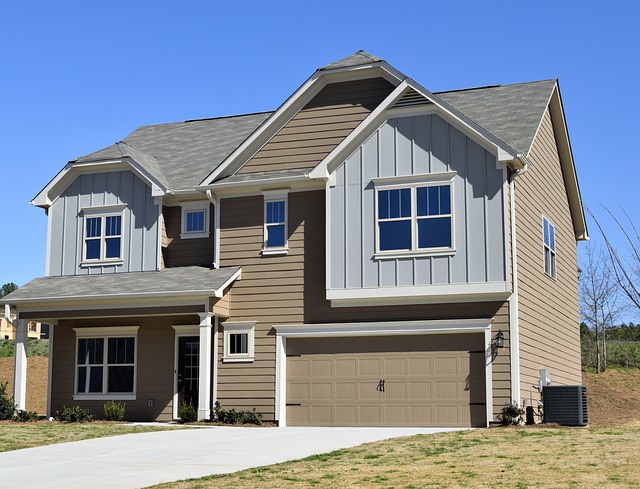Contractors in the home improvement industry can access various financing options—from short-term loans to mortgages—to grow their businesses, manage projects, and attract clients. These options provide flexible funding, swift approvals, and predictable repayments, catering to diverse project needs. Lenders assess creditworthiness, expertise, and project scope; favorable factors include strong credit scores, successful track records, detailed plans, and financial stability. While financing offers tax benefits and flexible terms, contractors must carefully consider interest rates and potential fees. Strategic planning, including assessing creditworthiness, building a portfolio, and diversifying sources, is key to securing pre-approval for competitive advantage.
Home improvement projects can be lucrative for contractors, but securing funding is crucial for project success. Understanding various financing options tailored for contractors is essential in navigating this competitive market. This article delves into the world of home improvement financing, offering insights on different loan types, factors influencing approval, and strategies for a smooth funding process. From traditional banks to alternative lenders, contractors can find suitable financing methods to fuel their growth.
- Understanding Home Improvement Financing for Contractors
- Types of Financing Options Available to Contractors
- Factors Affecting Contractor Loan Approval
- Benefits and Drawbacks of Different Financing Methods
- Strategies for Securely Obtaining Home Improvement Loans
Understanding Home Improvement Financing for Contractors

Many contractors looking to grow their businesses often turn to home improvement financing options. This is because the residential construction sector offers significant opportunities, with a constant demand for renovation and remodeling services. Understanding how home improvement financing works is crucial for contractors aiming to secure projects and expand their client base. These financing solutions provide contractors with access to capital, enabling them to take on larger jobs, invest in equipment upgrades, and attract more customers.
Contractors can choose from various financing methods tailored to their specific needs. Short-term loans are popular for smaller projects or immediate cash flow requirements, while lines of credit offer flexibility for ongoing work and inventory management. Longer-term financing options, such as installment loans or mortgages, are suitable for larger home improvement ventures. Familiarizing oneself with these financial tools and exploring the available options can help contractors navigate the competitive market, ensure efficient project execution, and ultimately drive business growth in the home improvement sector.
Types of Financing Options Available to Contractors

In the realm of home improvement, contractors often require various financing options to accommodate different project needs and scopes. Traditional bank loans remain a popular choice for their predictability and long-term repayment structures. These can be particularly beneficial for larger projects that demand significant capital upfront. Additionally, lines of credit offer contractors flexibility, allowing them to access funds as needed during the course of a project, making them ideal for smaller-scale jobs or those with unpredictable expense fluctuations.
Another financing avenue gaining traction in the home improvement sector is the use of credit cards and construction loans. Credit cards provide quick access to capital for immediate needs, while construction loans are designed specifically for building projects, offering funding in stages as work progresses. Furthermore, alternative lenders have entered the market, offering online-based short-term loans with faster approval times, catering to contractors seeking swift financial support for urgent project requirements.
Factors Affecting Contractor Loan Approval

When considering home improvement financing for contractors, several factors play a significant role in loan approval. Lenders carefully evaluate each contractor’s financial health and project viability to mitigate risks. Key considerations include the contractor’s credit history, demonstrated expertise in their field, and the scope of the proposed project. A solid credit score, a proven track record of successful projects, and well-defined plans for project completion can greatly enhance a contractor’s chances of securing favorable loan terms.
Additionally, lenders assess the financial stability of the business, including cash flow, liabilities, and assets. For home improvement financing, demonstrating the ability to manage costs and maintain profitability is crucial. Well-prepared budgets, detailed cost estimates, and clear project timelines further strengthen an application. Lenders also consider the type and size of projects previously undertaken by the contractor, ensuring they align with the lender’s criteria and market demand for home improvement services.
Benefits and Drawbacks of Different Financing Methods

When it comes to home improvement projects, contractors have various financing options available that can make their business more accessible and efficient. Each method has its unique advantages and potential drawbacks, making it crucial for contractors to understand these nuances before making a decision. One of the primary benefits of financing is that it allows contractors to take on larger projects with significant upfront costs. This is particularly beneficial in the home improvement sector, where customers often require substantial investments for renovations or construction.
Financing methods such as loans and lines of credit offer contractors the necessary capital to purchase materials, hire staff, and manage project expenses. Additionally, some financing options provide tax advantages and flexible repayment terms, ensuring contractors can maintain a healthy cash flow. However, there are also potential drawbacks. Interest rates on loans can vary widely, impacting the overall cost of financing. Furthermore, certain financing agreements may come with strict conditions and early termination fees, which could be burdensome for contractors if their projects don’t meet expectations.
Strategies for Securely Obtaining Home Improvement Loans

Securing home improvement loans as a contractor involves strategic planning and understanding your financial options. Begin by assessing your creditworthiness; good credit scores and a solid payment history significantly improve loan terms. Contractors should also build an extensive portfolio showcasing their expertise and past projects, which can enhance credibility with lenders.
Diversify your financing sources by exploring traditional banks, credit unions, or specialized home improvement lenders. Each option offers unique advantages and interest rates, so compare and contrast to find the best fit. Pre-approval for loans before approaching potential clients demonstrates professionalism and financial security, boosting your contractor credentials in a competitive market.
Home improvement financing is a powerful tool for contractors, enabling them to take on larger projects and grow their businesses. By understanding the various financing options and strategic application of loan strategies, contractors can navigate the approval process, access capital, and leverage the benefits of different financing methods to deliver outstanding projects. Armed with this knowledge, contractors can confidently secure funding, ensuring a prosperous future in the competitive world of home improvement.
